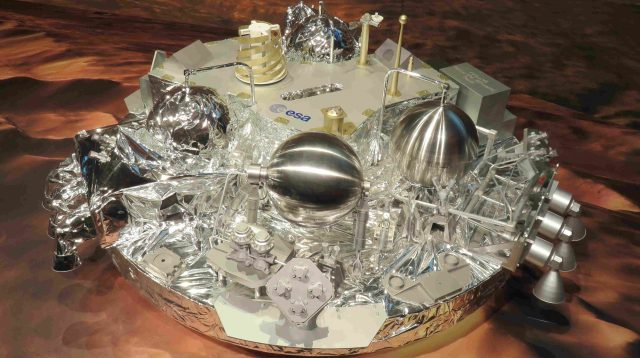An official conclusion regarding why the ESA’s Schiaparelli Mars lander made a crash landing on the Martian surface has been made. Scientists recovered data from the lander before its demise, which reveals more about the subsequent events during the device’s final moments.

When Schiaparelli entered Mars’ atmosphere, it performed braking just as anticipated, and its parachute and heatshield both released at 12 km and 7.8 km as standard. Up until this point, the radar altimeter was working regularly, and its feedback was integrated into other systems. Additionally, the Inertial Measurement Unit (IMU), which measures the vehicle’s rate of rotation, was operating as it typically would.
However, shortly after the parachute deployed, Schiaparelli’s IMU reached saturation (maximum inertia), and the IMU reported at saturation for longer than the navigation system expected or could handle.
When the navigation system received the IMU’s unpredictable output, it concluded that it meant the spacecraft had “an estimated altitude that was negative,” meaning below ground level. The system released the backshell too early, fired the braking thrusters, and ultimately authorized release of on-ground systems as if Schiaparelli landed. But in reality, the spacecraft was still in freefall for more than two miles off the ground.
Plugging this data into Schiaparelli’s control systems reproduced the fatal turn of events.
Schiaparelli’s parent Trace Gas Orbiter (TGO) is in orbit around Mars and is beginning its series of science observations, sampling the atmosphere to characterize its chemistry. The TGO is moving from its initial parking orbit into aerobraking maneuvers that will shift the spacecraft into its operational orbit by the end of 2017. Ultimately, the TGO plans to act as a communications hub for the ExoMars 2020 rover.
Source: ExtremeTech
Advertisement
Learn more about Electronic Products Magazine





